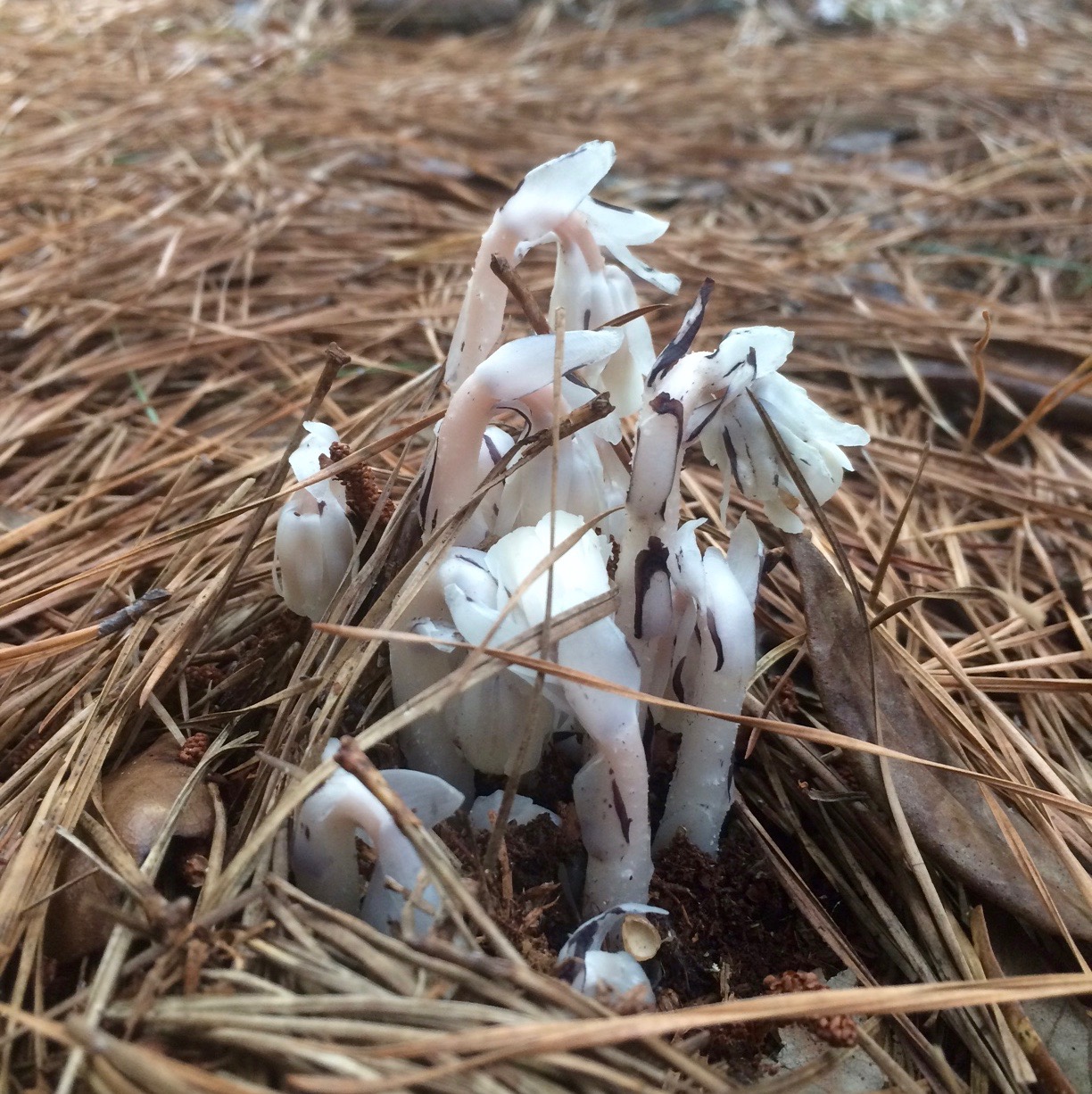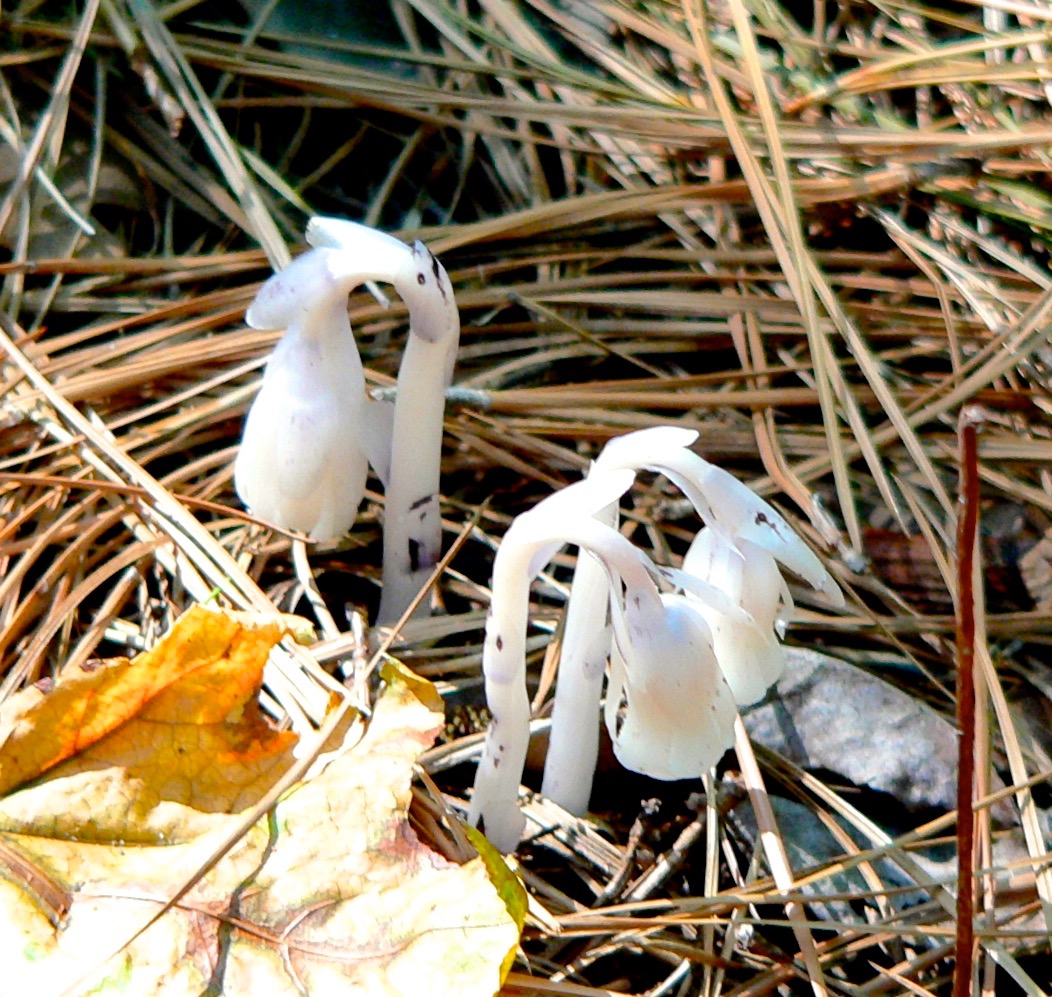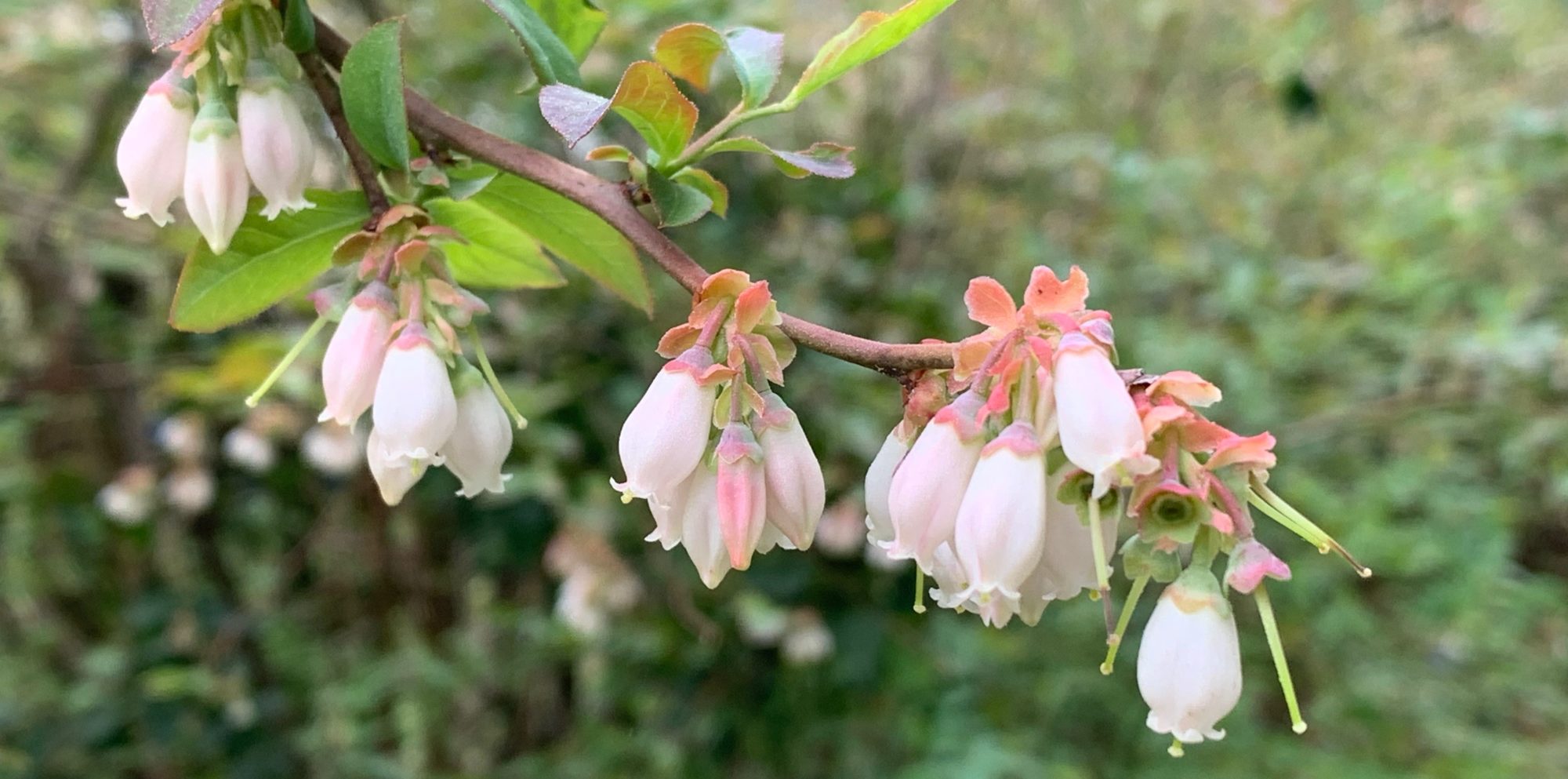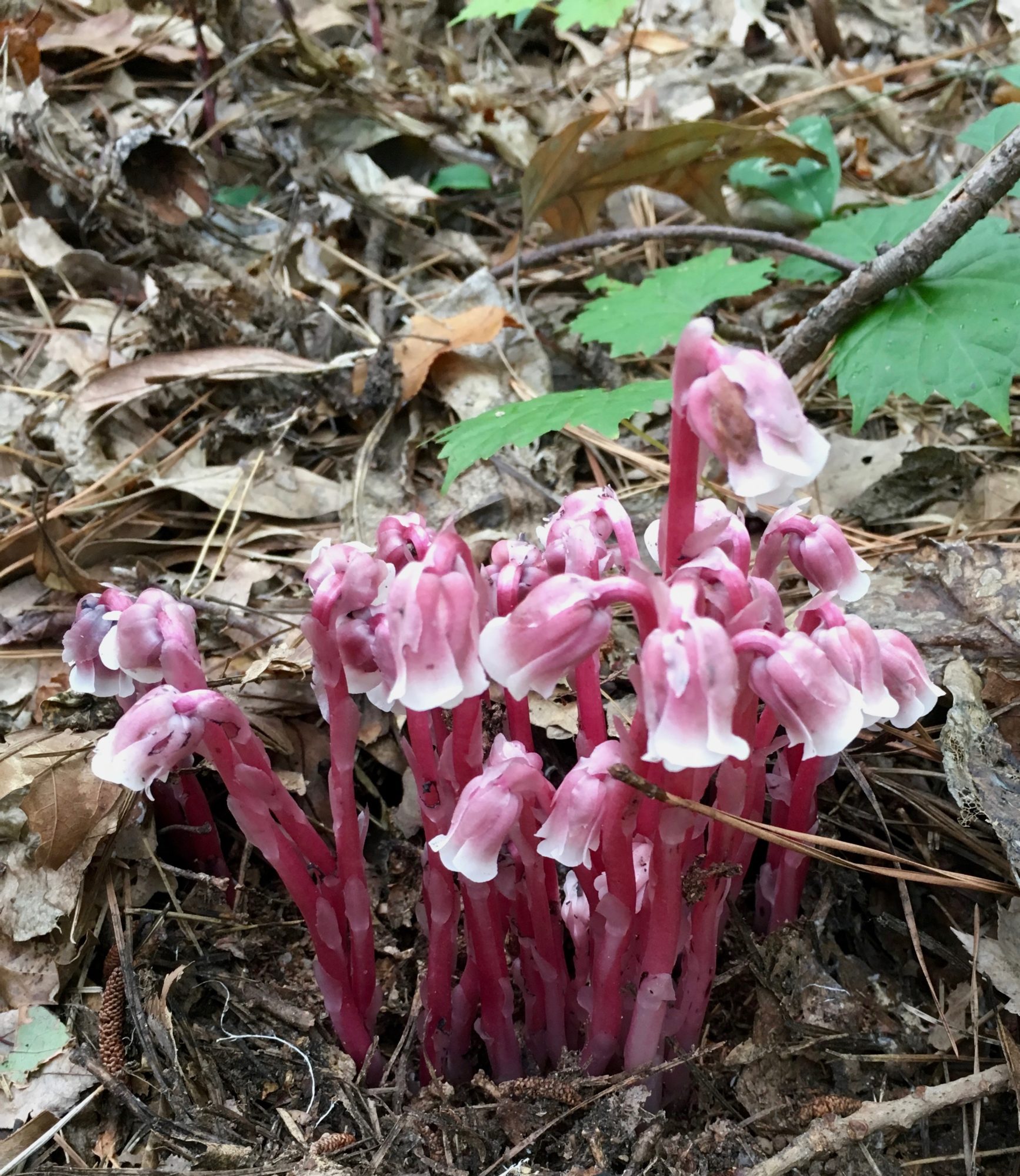by Mary Reid Barrow

Nature’s own Halloween plant is pushing up from the ground among the pine needles in the woods these days.
Only this spooky white plant won’t jump out from behind a tree and say, “Boo.” You’ve got to look for it. Called ghost plant, corpse plant, ghost pipe or Indian pipe, the plant is as white as a ghost. And it stands out as the only white plant in the landscape, but it is very small and competes with the leaf litter for a place in the haunted house
I grew up calling it Indian pipe. It was said that it got its name because it looks like the white clay tobacco pipe that Native Americans used to make. But ghost pipe or plant and corpse plant are equally descriptive and so appropriate for the season.
Though plant literature says that Indian pipe grows from spring to fall, it seems to make itself known around here mostly in autumn. I wonder if that’s because Indian pipe likes moisture and our soils are damper this time of year from nor’easter and hurricane rains.
Indian pipe not only grows in the shade but it especially likes the shade of pines, oaks and beech trees. Because its white almost translucent stem and flower have no green and don’t get energy from the sun, it can grow in the densest woods.
As long as there are trees around, Indian pipe is happy. The plant gets its food from a relationship with fungi under the ground, the same fungi that have a rapport with tree roots.
Indian pipe also looks like a fungus, but it is a plant for sure with its one white stem and one white bell-shaped flower:

I have read that Indian pipe is really a member of the blueberry family. Though I find that hard to believe, Indian pipe’s little flower are reminiscent of tiny blueberry flowers in spring:

If you are lucky enough to come across a patch of Indian pipe in the woods, you may be tempted to bring home a bunch of Halloween flowers. Don’t! If you want to really see a corpse plant, you certainly will, as your pretty white flowers quickly turn black and really die.
Occasionally you will come across pink Indian pipe I saw it once at Norfolk Botanical Garden and it is beautiful:

It defies everything I said about Indian pipe being a Halloween plant unless I could say it is the ghost plant in its own Halloween disguise!
Do you have a favorite tree or plant with a story to tell? What relationships have you observed between plants and critters? Who eats whom? Who has babies where? Send an email to maryreid@lrnow.org